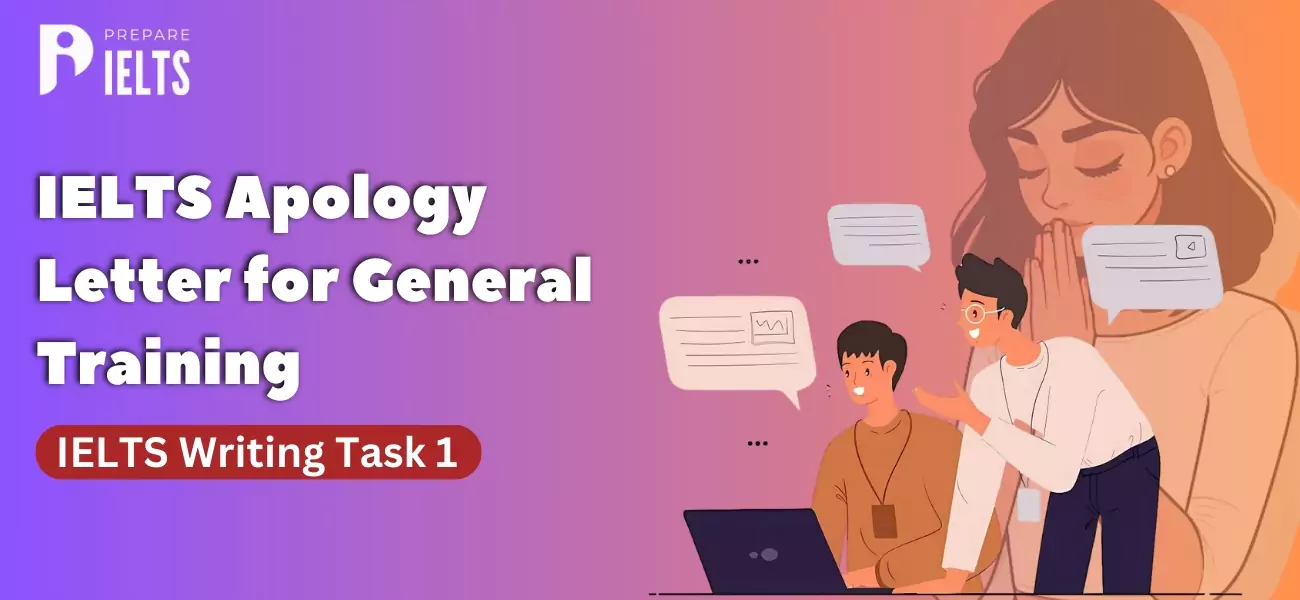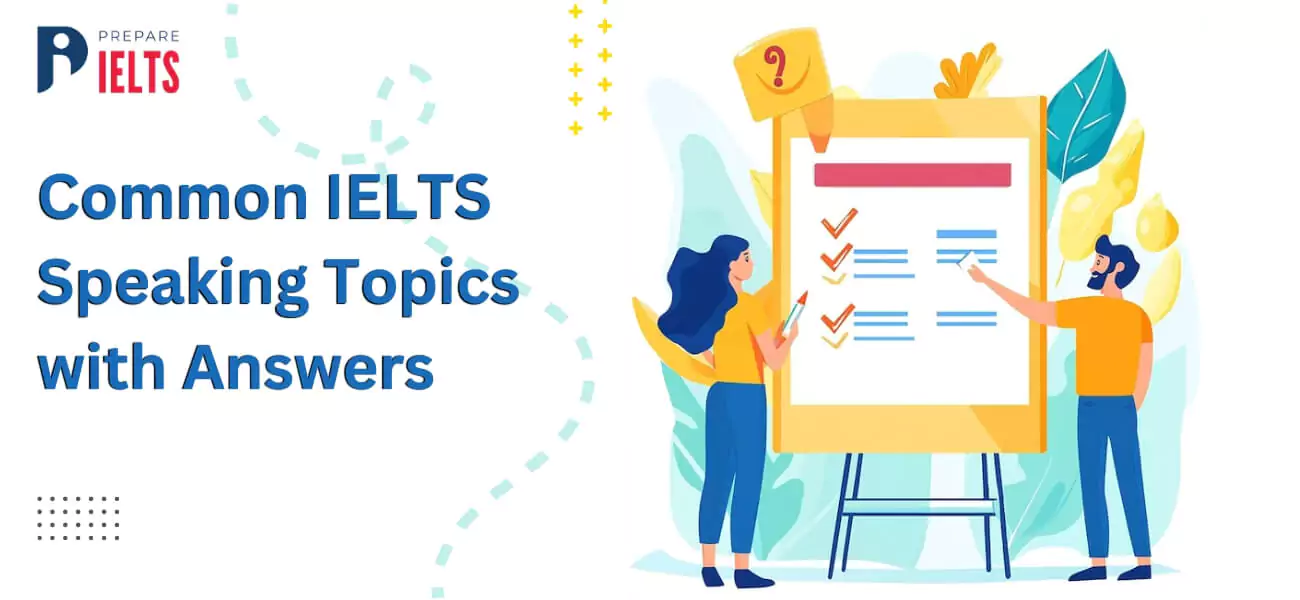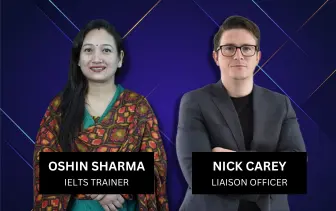
Overview
The International English Language Testing System ( IELTS) is a widely recognised and accepted English language proficiency test used worldwide for various purposes, including work and study. There are two main types of IELTS formats- General Training (GT) and Academic. General and Academic IELTS are designed to assess English language skills in different contexts. Knowing the distinction between the academic and general IELTS tests is crucial for test takers to choose the right one for their specific needs.
In this blog, we will explore some of the important general and academic IELTS. So, let’s begin with the blog!
What does IELTS Academic vs IELTS General Training mean?
The differences between the Academic and General IELTS Training exams are explained in this section:
Candidates who want to apply for further education in nations where English is the primary medium of communication should take the IELTS Academic exam. The prime aim of the exam is to determine whether an applicant is efficient enough to live and study in the English language. Australia, the US, Canada, the UK, and New Zealand are the nations that most commonly accept IELTS as a valid score for admission to their universities as part of the eligibility criterion.
On the other hand, students who want to apply for higher education, jobs, training programs, or immigration to the US, UK, Australia, New Zealand, or Canada need to take the IELTS General Training exam. The purpose of the exam is to assess a candidate's everyday, non-academic English proficiency.
Countries use the IELTS General Training for immigration-related purposes. The exam's main focus is on the candidate's basic survival capabilities in a wide range of social and professional contexts.
Difference between Academic and General IELTS
Here's a table summarising the key between IELTS academic vs general:
| Basis of Difference | Academic IELTS | General IELTS |
|---|---|---|
|
Purpose |
Academic IELTS is primarily designed for students who wish to study in universities and educational institutions in an English-speaking country. |
General IELTS is intended for individuals who want to immigrate, work or undertake non-academic training programs in English-speaking countries. |
|
Reading and Writing Tasks |
In Academic IELTS, the reading and writing tasks are more academic and complex, and the topics are related to academic subjects, such as science, technology, and history. |
The reading and writing tasks in General IELTS are more focused on daily life and workplace scenarios, such as job advertisements, letters, and emails. |
|
Listening Tasks |
Academic IELTS listening tasks are more focused on academic lectures |
General IELTS listening tasks focus more on social situations, such as public announcements and conversations in daily life. |
|
Speaking Tasks |
Academic IELTS speaking topics are related to academic subjects, such as science, technology, and culture. |
General IELTS speaking topics are related to daily life, such as work, family, and leisure. |
|
Duration |
In academic IELTS, the reading and writing sections take 60 minutes to complete. |
In contrast, General IELTS reading and writing sections take 60 minutes to complete. |
|
Test Difficulty |
Academic IELTS is considered to be more difficult |
The General IELTS test is comparatively easy. |
Register Now, for a free Mock test - Join Today!
Difference between Academic and General IELTS Test Pattern
As previously mentioned, the main objective of IELTS is to assess a candidate's proficiency in speaking, listening, reading, and writing English in less than three hours. The four sections of the IELTS Academic and General Training exams are as follows: the Speaking and Listening sections have the same format, while the Reading and Writing sections have varied content depending on the candidate's chosen test.
The IELTS exam's writing, reading, and listening sections are all administered on the same day, with no interruptions in between. However, depending on the availability of slots at the test site, the Speaking portion of the IELTS exam can be finished either one week prior to or one week following the other tests. An IELTS test can take up to 2 hours and 45 minutes in total.
IELTS Academic vs General: Speaking Section (Common to both)
About the test
The Speaking Section test format consists of an interview between the candidate and the examiner. Every speaking exam is videotaped. Each candidate may spend 11 to 14 minutes in this phase. This portion of the test is divided into three sections, each of which aims to accomplish a certain objective in terms of task input, candidate output, and interaction pattern. This section is centred on evaluating the candidates' spoken English proficiency Structure
There are three parts of the Speaking Section:
-
Part 1: In this section, the examiner would pose general questions to the candidate on anything from themselves to well-known subjects like hobbies, family, studies, and employment. This exchange takes about four or five minutes.
-
Part 2: The candidate is handed a card with a topic on it that he must speak on during this portion. After receiving one minute to prepare, the candidate has two minutes to talk on the subject. The examiner then probes further on the subject.
-
Part 3: The examiner questions the candidate one more time about the subject covered in Part 2 of this section. During this time, the candidate talks about abstract concepts and concerns for four to five minutes.
IELTS General vs Academic: Listening Section (Common to both)
About the test
In this section, candidates would have to respond to a series of questions and listen to four recordings of fluent English speakers. This segment has a total duration of thirty minutes. Its primary goal is to ascertain the candidates' comprehension of the key ideas and specific factual information, as well as their thoughts and attitudes, the aim of a speech, and evidence of their ability to follow the evolution of ideas.
Structure
Recording 1 - In the first recording, two people would be having a conversation in a typical social context.
Recording 2 – The second monologue set in a typical social context will be recorded for the second time.
Recording 3 – This recording, which takes place in an educational or training setting, features three to four individuals having a conversation.
Recording 4 – The final recording would be a monologue on an academic subject.
Difference between IELTS General and Academic: Academic Reading
About the test
This 40-question portion of the IELTS exam is intended to assess a candidate's reading comprehension. This part lasts about 60 minutes in total, during which the candidate must read a range of passages and respond to questions based on them. This specific segment is perfect for professionals looking to work abroad or for testing those who want to pursue higher education.
Structure
The reading section consists of three lengthy paragraphs, which might be factual, analytical, or descriptive. The passages are collected from books, periodicals, newspapers, research papers, and even magazines. Once the candidate has read the sections, they will be given questions.
Difference between IELTS General and Academic: General Training Reading
About the test
This 40-question component of the IELTS exam evaluates a candidate's reading comprehension. The exam lasts 60 minutes in total.
Structure
Students receive sections from ads, company guidelines, brochures, and other materials, much as in an academic setting. Given that the chosen text is typically something that one comes with on a daily basis, the general consensus indicates that this is easier than the academic format.
Similarities between IELTS Academic vs General
General and Academic IELTS examinations, administered by IDP IELTS India, are available at various test locations around India and cost INR 17,000 each. The two exams last two hours and forty-five minutes. In this section, we will discuss the commonalities between the IELTS Academic and General Training exams.
| Specifications | Common for IELTS Academic & General Training Tests |
|
Test Format |
Reading, Listening, Writing, and Speaking are the four components of both exams. |
|
Test Duration |
A total of 2 hours and 45 minutes are allotted for the two tests. |
|
Listening Section |
The format and degree of difficulty are the same. As you listen to the recordings, you will respond to questions about the material. |
|
Speaking Section |
Same structure and degree of difficulty. Your conversation with the examiner will cover a wide range of topics. |
|
IELTS Results |
The same 9-band scoring system is used in both exams to determine your English language proficiency level. |
|
Test Day Experience |
Both assessments have reading, writing, and listening components that must be completed on the same day or can be taken on a different day from the speaking exam. |
Conclusion
In conclusion, the choice between appearing for either General IELTS or Academic IELTS depends on your specific goals and needs. If your objective is to migrate to an English-speaking country, work, or pursue non-academic training, General IELTS is the appropriate version. On the other hand, if you aspire to study at a university or gain professional registration in fields like medicine or engineering, Academic IELTS is the recommended option. By understanding the difference between academic and general IELTS, you are able to plan ahead and make an educated choice accordingly, thus increasing your chances of success in achieving your goals.
If you are willing to learn more about Academic IELTS and General IELTs and are still deciding which one to appear for, we recommend you sign up for our IELTS courses designed by our experts. If you need further guidance, please contact Prepare IELTS Exam (PI) expert counsellors. Our team of education experts is dedicated to assisting you in the best possible way for the IELTS exam. You can also get a one-on-one counselling session online via our platform. Contact us at info@prepareieltsexam.com or call us at +91 9773398388.
FAQs
It depends on your specific goals. Academic IELTS is designed for academic purposes, like university admission, while General IELTS is for immigration and general work purposes. So, choosing the one that aligns with your objectives is recommended.
Yes, in some cases, IELTS Academic can be used instead of General IELTS for immigration or work purposes, but it's essential to check the specific requirements of the organisation or immigration authority you are dealing with to confirm if they accept it.
Yes, in many cases, you can use General IELTS to study abroad. However, it's crucial to check the specific language requirements of the universities or colleges you're interested in, as some may prefer Academic IELTS for certain courses or programs.
Indeed, mock exams are crucial for preparing for the IELTS exam. They offer a number of advantages that can improve your exam performance: Test format: You can familiarise yourself with the timetable, format, and types of questions you will encounter on the actual IELTS exam by taking practice tests. Identification of strengths and weaknesses: Taking practice tests will help you identify your areas of strength and places for improvement. Time management: You can develop effective time management skills using mock exams. By practising in timed scenarios, you can develop time management skills and complete each phase within the allocated time limits.
The General Training and Academic form of the IELTS are fairly comparable. IELTS Academic, on the other hand, is considered to be more difficult. Preparing for the Academic and General Training form of the IELTS might take two to four months. To be prepared for the IELTS exam, make sure you are familiar with the syllabus and the format of the examination. You should also take many practice exams. Regarding the IELTS exam pattern, the Speaking and Listening parts are the same for both the Academic and General Training versions. The IELTS Writing and Reading portions, however, differ for each.
Latest Blogs
-

IELTS Score for Canada: Minimum IELTS Requirement for Canada 2025
2024-09-27 18:24:14
-

IELTS Apology Letter for General Training: IELTS Writing Task 1
2024-09-25 16:38:03
-

Minimum IELTS Score for Australia: Student Visas, Universities, and PR in Australia
2024-09-23 18:09:51
-

Common IELTS Speaking Topics with Answers
2024-09-20 18:21:56
-

Describe a foreign culture that you like: IELTS speaking cue card
2024-09-18 16:14:11
-

Describe a Rainy Day IELTS Speaking cue card
2024-09-18 11:11:32
-

Describe a new law you would like to introduce in your country IELTS cue card
2024-09-13 17:17:46
-

Describe your favourite weather: IELTS cue card
2024-09-11 18:01:28
-

Describe an enjoyable journey by public transport: IELTS cue card
2024-09-09 18:05:45
-

Step-by-Step Guide to IELTS Registration in India for the Year 2024 & 2025
2024-09-07 12:59:51


